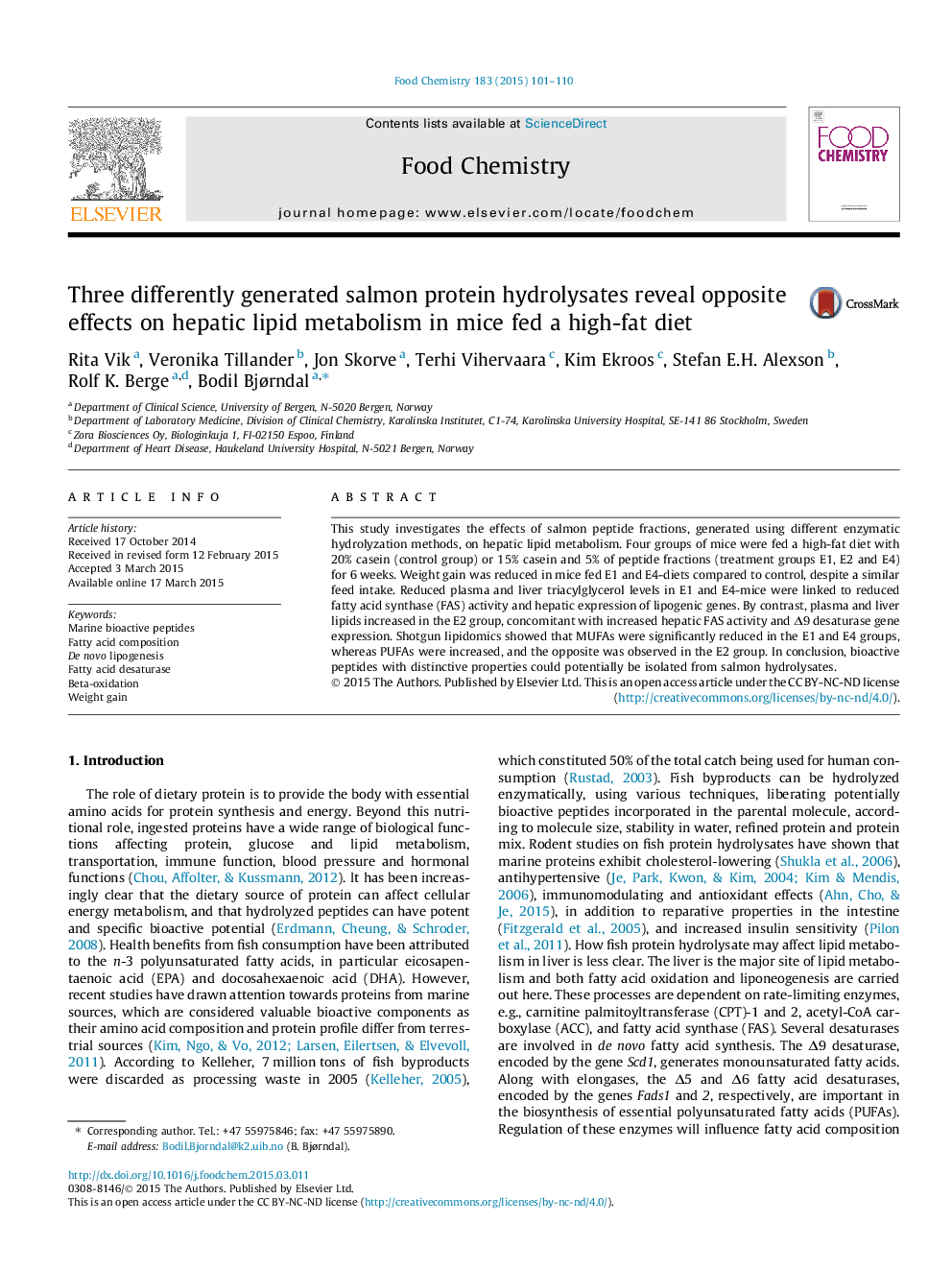| Article ID | Journal | Published Year | Pages | File Type |
|---|---|---|---|---|
| 7591661 | Food Chemistry | 2015 | 10 Pages |
Abstract
This study investigates the effects of salmon peptide fractions, generated using different enzymatic hydrolyzation methods, on hepatic lipid metabolism. Four groups of mice were fed a high-fat diet with 20% casein (control group) or 15% casein and 5% of peptide fractions (treatment groups E1, E2 and E4) for 6Â weeks. Weight gain was reduced in mice fed E1 and E4-diets compared to control, despite a similar feed intake. Reduced plasma and liver triacylglycerol levels in E1 and E4-mice were linked to reduced fatty acid synthase (FAS) activity and hepatic expression of lipogenic genes. By contrast, plasma and liver lipids increased in the E2 group, concomitant with increased hepatic FAS activity and Î9 desaturase gene expression. Shotgun lipidomics showed that MUFAs were significantly reduced in the E1 and E4 groups, whereas PUFAs were increased, and the opposite was observed in the E2 group. In conclusion, bioactive peptides with distinctive properties could potentially be isolated from salmon hydrolysates.
Related Topics
Physical Sciences and Engineering
Chemistry
Analytical Chemistry
Authors
Rita Vik, Veronika Tillander, Jon Skorve, Terhi Vihervaara, Kim Ekroos, Stefan E.H. Alexson, Rolf K. Berge, Bodil Bjørndal,
